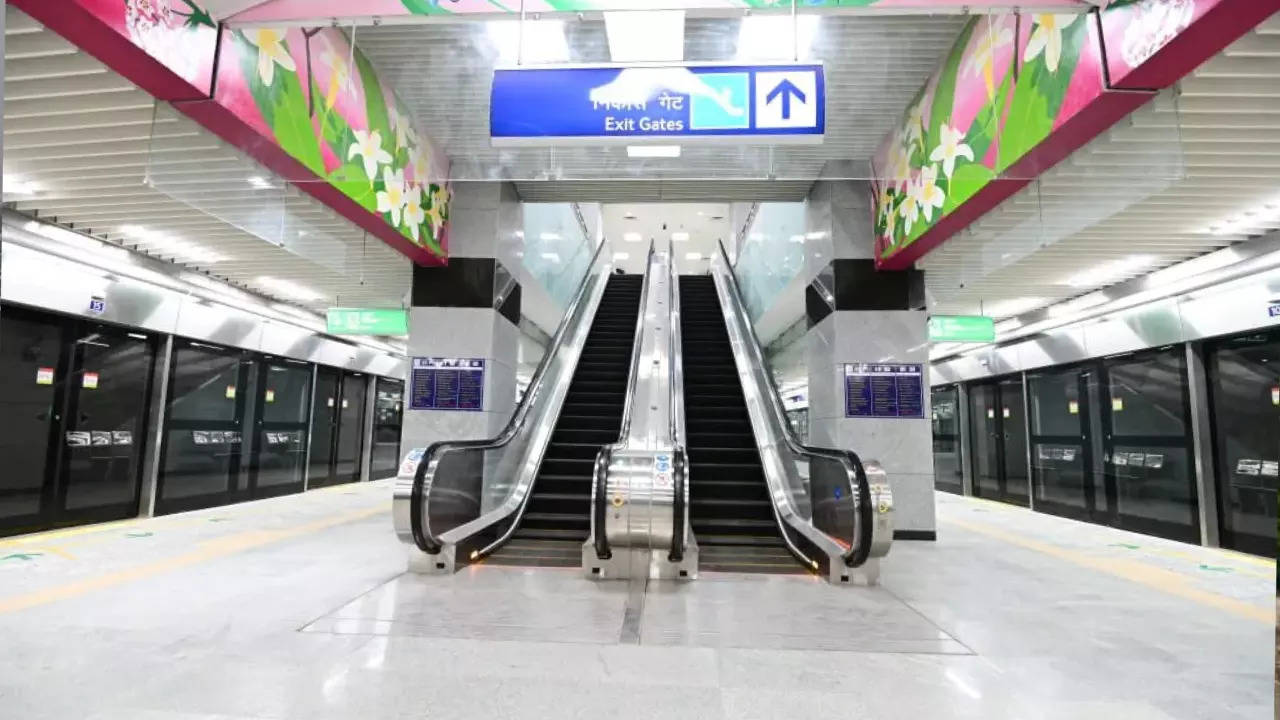Delhi’s Hauz Khas Will No Longer Be India’s Deepest Metro Station, Another One Will Get the Tag Soon
A new metro station in Kolkata will replace Delhi's Hauz Khas as India's deepest Metro station.

Representational image.
Photo : Twitter
New Delhi: Constructed under 29 meters underground, Delhi Metro's Hauz Khas station on the Janakpuri West-Botanical Garden corridor is the deepest Metro station currently operational in India. It has nine lifts and 23 escalators for passenger handling. However, Hauz Khas will soon lose the tag to Howrah station in Kolkata.
Located 33 meters below the surface, Howrah station under the river Hooghly will be the deepest metro station in India and commercial operations are expected to start soon. This station is part of India's first underwater metro corridor, which ensures better connectivity between Howrah and Kolkata.
Trial runs on this route are going on and the first trial was successfully completed on Wednesday. "Kolkata Metro created another history on April 12, 2023. After a long wait, the Country's first Metro has run under the mighty river Hooghly. For the first time in India Metro has completed the river journey," an official statement said.
Senior Official at Kolkata Metro Kaushik Mitra said they are hoping to launch commercial services on this corridor this year. "Once launched, Howrah will become the deepest Metro station (33 meters below the surface) in the country," he added.
However, the Howrah station will also lose the tag in near future. Another metro station, deeper than Howrah, is coming up in Pune. The Pune Metro's upcoming Civil Court metro station is likely to be constructed at 33.1 metres underground.
Later, Pune's Civil Court station will hand over it to Thirumayilai Metro station in Chennai which will be 35 meters under the surface. The work of this station has already started.
Earlier in 2022 Kolkata Metro Rail Corporation (KMRC) said that the East-West Metro Corridor project, India's first underwater metro service, is expected to be completed by December 2023.
Trending:
End of Article
Subscribe to our daily Newsletter!
Related News





Delhi: Traffic Advisory Issued In View Of IPL Match On May 7; Check Diversions

3 Injured After Multiple Shots Fired At Car Showroom In Delhi's Tilak Nagar | VIDEO

Delhi-Gurugram Air Taxi Ride To Cost Rs 2K-3K Per Person, Will Carry Four Passengers Per Trip

Delhiites, Masalas In Your Kitchen Might Have Acid In Them, Police Seizes 15 Tonnes Of Fake Spices

Delhi: Massive Fire Breaks Out in Plastic Factory in Narela's Bhorgarh Industrial Area | VIDEO








